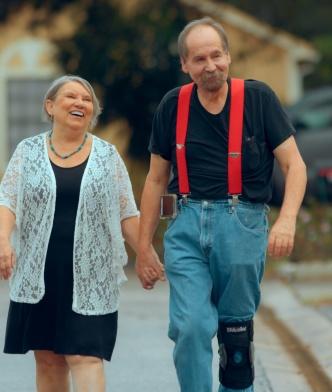Injuries From Skiing
What Kind of Injuries Can I Get From Skiing?
- The Fee Is Free Unless You Win®.
- America's Largest Injury Law Firm™
- Protecting Families Since 1988
- 20 Billion+ Won
- 1,000+ Lawyers Nationwide
Free Case Evaluation
Porter Ranch Gas Leak
Jacob T. Rodgers v. City of Gainesville D/B/A Gainesville Regional Utilities
Estate of Frank Townsend v. RJ Reynolds, et al.
Morgan Stanley Data Security Litigation
Stephen Davis v. Levon Clark, Ricardo Williams, Marty Grifka and Derek Pak
McAdams v. Monier Lifetile, LLC
Coleman v. Martinez
Gold v. Lumber Liquidators
Clemmons, Patrick
Brink v. Ruiz

The attorneys featured above are licensed in Florida. For a full list of attorneys in your state please visit our attorney page.
What Kind of Injuries Can I Get From Skiing?
Skiing is a popular recreational activity in the winter, but unfortunately, it comes with serious risks. Whether you're hurt skiing because you have a lack of experience or because another skier is not maneuvering safely on the slopes, you might find yourself asking what kind of injuries you can get from skiing. Many of the most common injuries associated with skiing cannot be easily identified at the time of the accident.
This is because some of them can be shielded by the shock of going through an accident or due to symptoms that are not present until days or weeks after the accident has happened. This means that when you're thinking about what kind of injuries you can get from skiing, you need to be prepared to get medical attention as soon as possible. Only a doctor can complete the proper evaluation and diagnosis plan to inform you about your treatment and your overall medical options.
Many people do not expect to be seriously hurt when hitting the slopes and take every possible precaution to minimize their risk of injuries. Many of the most common ski accident injuries can be easily avoided by being knowledgeable about basic safety principles and acknowledging your own risks and limitations when it comes to skiing. Ski slopes, for example, use different colors and shapes to indicate the experience level recommended to safely navigate that slope. If you try to go too fast or level up to a run that is not safe for you, you could end up suffering devastating injuries.
You may have grounds to file a personal injury lawsuit with the help of an experienced attorney in the event that you are hurt because of another person's negligence. Unfortunately, many people who are injured in ski accidents do so because of their own errors and improper safety precautions, meaning that they will have to turn to their health insurance to help pay for these injuries.
If you’ve already been hurt when skiing when you know what kinds of injuries you can get from this winter activity. But with so many factors influencing your ultimate medical conditions and diagnosis, you deserve to have a lawyer who works with ski injuries regularly to protect your legal rights.
Get answers to commonly asked questions about our legal services and learn how we may assist you with your case.
Morgan & Morgan
Most Common Types of Ski Injuries
When looking for, "What kind of injuries can I get from skiing," you will likely uncover a plethora of information that all depends on the severity and type of your accident. Most of this has to do with the speed you were going, the type of hill or place you were at, at the time of the accident, and how you fell. For example, falling off a chairlift will yield much more serious injuries than someone who falls down on a beginner hill.
Knee sprains are some of the most common injuries associated with skiing. They are in fact, the most common ski injury at all times because the ligament around the knee joint can be injured by stretching or tearing too far. Putting too much bend pressure on the knee in the opposite direction of how it should normally bend, can cause this injury. If you are concerned or have weak knees, it may be a good idea to wear a knee brace when you hit the slopes and a knee brace can also be helpful in the event that a ski injury does occur.
Another common injury associated with skiing is a fractured wrist. As mentioned above, how you fall in a ski injury has a significant impact on the medical conditions you'll be diagnosed with. When you have a fractured wrist, you will likely fall on your arm in a strange way. Putting too much pressure on your wrist bones or falling on an outstretched hand can cause fractures in the wrist. Wearing supports or wrist braces and practicing how to fall when you first learn to ski, can all help you to avoid these unfortunate injuries.
Shoulder dislocations are another common type of ski injury. This occurs when the bone of the arm loses contact with the shoulder blade socket. This often happens when a person is hanging by one arm or they fall harshly on one shoulder. Make sure that you practice going at a speed that is safe for you and how to fall in a safe manner to minimize the possibility of a shoulder dislocation.
A broken leg is another common type of skiing injury. When you put skis on, your legs endure a tremendous amount of pressure. Colliding into another skier or a tree can lead to accidents with broken or fractured legs. Make sure to take your time and only hit the slopes that you are comfortable with, leaving plenty of space between you and other skiers.
Ankle and foot strains are also extremely common ski injuries. If the ski's binding does not let go when strained, your ankle joint ligaments can be injured and your foot can suffer serious trauma such as a fracture or a sprain. Ankle braces should be worn by those people who have serious ankle injuries or weak injuries.
Finally, although these injuries are very rare when skiing, spinal injuries can have some of the most long-lasting impacts for victims. This can be caused by a fracture of the cervical spine or a displacement of the cervical spine. In this situation, you put a lot of pressure very quickly on your spinal cord. Any neck pain after a significant injury on the slope should be thoroughly evaluated by a medical professional to help you. While you recover, you may use a cervical collar to give your neck additional support.
Filing a Lawsuit and Recovering Compensation
In some cases, your skiing injury may be the result of an accident. You might have fallen strangely on the slopes or otherwise have been seriously injured. However, when you find yourself suffering in these situations, it's important to investigate the cause of the accident to determine whether or not another person is potentially responsible for your injuries. The support of a lawyer is recommended to evaluate whether or not someone is legally responsible for the injuries you have sustained. If another skier was under the influence of alcohol, for example, and struck you, then you may need to file a lawsuit against that party. The support of an experienced attorney is instrumental in investigating the scene of this accident and helping you to determine if more than one entity is responsible for your injuries.
No person who suffers should find themselves dealing with this kind of situation alone, as it can be very overwhelming and difficult to recover compensation by yourself. This is especially true when you find yourself trying to figure out how best to move forward with your life when you have returned home after visiting a ski resort far away from your home base. You may need to file a personal injury lawsuit in the state in which you were injured and this can be extremely difficult and complicated for people who are going through this process for the very first time. Make sure that you gain the support of a lawyer to guide you through this process and to help prepare you for the most common things that you might expect in this experience.
Many people who suffer ski injuries on the slopes do not realize that this could impact them for weeks or months. They may not realize that they could be suffering devastating consequences because of another person's reckless or negligent actions. When someone else is fully or partly responsible for the injuries you have sustained, as a victim in most states, you have the right to pursue a personal injury lawsuit so long as you can illustrate this negligence and your resulting injuries and so long as you file a legal claim within a timely manner. This will vary from two to four years in most states, although you'll want to work with your ski injury lawyer to help you determine your grounds for filing a claim.
Is Someone Else Responsible for My Injuries?
If you can show that you suffered ski injuries because of another person’s negligence, this information can create a foundation for a state personal injury claim. Depending on the laws of the state in which you were injured, this can have a big impact on your ability to get treatments covered. Since your medical treatments are essential for giving you the best chance to recover in full, you need to know that your case is being handled by a professional legal team. If you need a lawyer to investigate your accident and resulting injuries, make sure to schedule an initial consultation as soon as possible.
To get started, you can contact the experts at Morgan & Morgan for a free, no-obligation case evaluation for more information regarding your next steps.
How it works
It's easy to get started.
The Fee Is Free Unless You Win®.
Results may vary depending on your particular facts and legal circumstances.
Step 1
Submit
your claimWith a free case evaluation, submitting your case is easy with Morgan & Morgan.
Step 2
We take
actionOur dedicated team gets to work investigating your claim.
Step 3
We fight
for youIf we take on the case, our team fights to get you the results you deserve.






